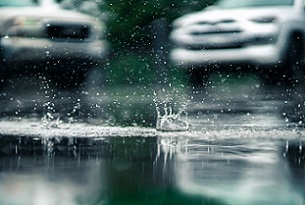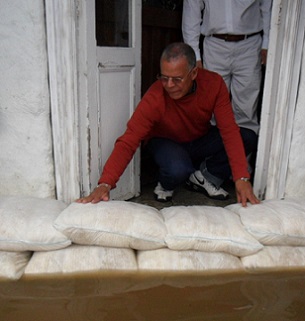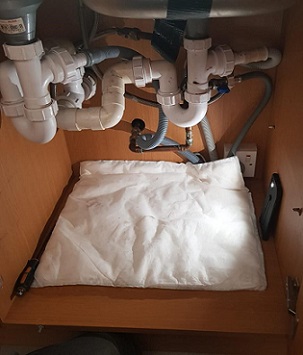 Southern England may well get a soaking in April 2024
Southern England may well get a soaking in April 2024
 FloodSax alternative sandbags keeping floodwater out of a home
FloodSax alternative sandbags keeping floodwater out of a home
 FloodSax are highly efficient at soaking up leaks, drips and spills inside
FloodSax are highly efficient at soaking up leaks, drips and spills inside
Why the south of England will be wetter than the north throughout April 2024
Southern England will get the worst of the rain in April with the north staying relatively dry in a U-turn of what normally happens.
The north is traditionally always wetter but the Met Office has revealed the reason why the south will face more rain in the coming weeks.
In its long-range forecast it reveals that the low weather pressure systems that bring wet weather are simply lower down the country than expected so the rain that usually falls in the north will now be landing 200 miles or so further south.
It says that from the week commencing April 1: “An area of low pressure pushes in from the south with further unsettled, changeable weather dominating throughout. All areas are likely to see further rain or showers at times, with some drier spells in between.
“The wettest weather will tend to favour the south while northern parts remain a bit drier on average.
“Through mid to late April, pressure is likely to be higher than average to the north of the UK with low pressure more likely to the west or southwest. This pattern tends to push the focus of unsettled weather further south than usual, with largest rainfall totals more likely to be in the south of the UK.
“Conversely northern, especially northwestern, areas will tend to be drier compared to normal.”
Flooding has been rife throughout the UK in recent months with many people only now painfully aware that councils have no responsibility to provide sandbags or any other flood prevention measures.
Several councils actively encourage people to get their own FloodSax alternative sandbags so they are prepared for flooding 24/7.
FloodSax are far easier to store and deploy than traditional sandbags which are heavy, cumbersome, difficult to use and can often be ineffective.
FloodSax are far more flexible and multi-purpose than sandbags as they come vacuum-packed in space-saving bags so hundreds can be transported in a car, yet immerse a FloodSax in water then its gelling polymer absorbs the water and retains it, transforming it into an instant sandbag but without the sand.
In their dry state the gelling polymer inside FloodSax can quickly soak up water dripping or leaking inside buildings to stop damage from spreading and they are used extensively like this in homes, businesses and public buildings including supermarkets and hospitals. They are very thin with a large surface area so can be slipped underneath leaking radiators, boilers, sinks and water pipes.